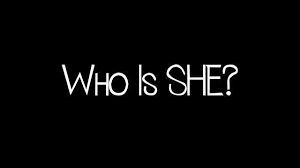
Jeremiah, Revelation, and Women of Heaven
Some thoughts on some puzzling texts:
I suppose I could add this to my series on “Difficult Bible Passages,” although I will actually be looking at three different texts. Some might wonder how they might compare or contrast. Twice in the Bible we hear about the “Queen of Heaven” – both times in Jeremiah. And some think Revelation also mentions this person – but more on that in a moment. Just what are these texts all about? Let me first offer the Old Testament passages. In Jer. 7:16-19 we read this:
So do not pray for this people nor offer any plea or petition for them; do not plead with me, for I will not listen to you. Do you not see what they are doing in the towns of Judah and in the streets of Jerusalem? The children gather wood, the fathers light the fire, and the women knead the dough and make cakes to offer to the Queen of Heaven. They pour out drink offerings to other gods to arouse my anger. But am I the one they are provoking? declares the Lord. Are they not rather harming themselves, to their own shame?
And in Jer. 44:15-25 we find these words:
Then all the men who knew that their wives were burning incense to other gods, along with all the women who were present—a large assembly—and all the people living in Lower and Upper Egypt, said to Jeremiah, “We will not listen to the message you have spoken to us in the name of the Lord! We will certainly do everything we said we would: We will burn incense to the Queen of Heaven and will pour out drink offerings to her just as we and our ancestors, our kings and our officials did in the towns of Judah and in the streets of Jerusalem. At that time we had plenty of food and were well off and suffered no harm. But ever since we stopped burning incense to the Queen of Heaven and pouring out drink offerings to her, we have had nothing and have been perishing by sword and famine.” The women added, “When we burned incense to the Queen of Heaven and poured out drink offerings to her, did not our husbands know that we were making cakes impressed with her image and pouring out drink offerings to her?” Then Jeremiah said to all the people, both men and women, who were answering him, “Did not the Lord remember and call to mind the incense burned in the towns of Judah and the streets of Jerusalem by you and your ancestors, your kings and your officials and the people of the land? When the Lord could no longer endure your wicked actions and the detestable things you did, your land became a curse and a desolate waste without inhabitants, as it is today. Because you have burned incense and have sinned against the Lord and have not obeyed him or followed his law or his decrees or his stipulations, this disaster has come upon you, as you now see.” Then Jeremiah said to all the people, including the women, “Hear the word of the Lord, all you people of Judah in Egypt. This is what the Lord Almighty, the God of Israel, says: You and your wives have done what you said you would do when you promised, ‘We will certainly carry out the vows we made to burn incense and pour out drink offerings to the Queen of Heaven.’ Go ahead then, do what you promised! Keep your vows!”


It is clear from both passages that Yahweh was not at all pleased with the way the Israelite families – especially the women – were worshipping this pagan deity. As to the identity of the Queen of Heaven, scholars are not fully certain. Christopher Wright says it “was probably the Mesopotamian goddess Ishtar (who bore that title), though she may have been identified with the Canaanites goddess Astarte or Asherah. She was the goddess of war – more relevantly to families – of fertility (of crops, animals and women).”
John Goldingay says this:
“Queen of the Heavens” is an all-purpose title like “Lord”; it could be applied to a chief goddess in a number of different religious systems. Jeremiah doesn’t indicate what name she would have had, so his condemnation could cover any goddess who might be conceptualized in these terms. In the context of Josiah’s reformation, 2 Kgs 23:13 mentions Ashtoreth, so either Josiah’s reformation didn’t reach family spirituality or the message reflects the revival of practices that Josiah terminated. Certainly the Queen of the Heavens continued to figure in popular spirituality (44:15-25). The loaves or cakes would incorporate a symbol of her (cf. 44:19) or might be figurines; and they might be presented to her in some way, as pouring libations to other gods was another aspect of this family worship. Yahweh says it’s as if people are deliberately engaged in these observances for the sake of irking me, to exasperate me, make me gnash my teeth (Ps 112:10), provoke me to anger, and drive me to take action in light of them.
And then we have the Revelation 12:1-6 passage to look at:
A great sign appeared in heaven: a woman clothed with the sun, with the moon under her feet and a crown of twelve stars on her head. She was pregnant and cried out in pain as she was about to give birth. Then another sign appeared in heaven: an enormous red dragon with seven heads and ten horns and seven crowns on its heads. Its tail swept a third of the stars out of the sky and flung them to the earth. The dragon stood in front of the woman who was about to give birth, so that it might devour her child the moment he was born. She gave birth to a son, a male child, who “will rule all the nations with an iron scepter.” And her child was snatched up to God and to his throne. The woman fled into the wilderness to a place prepared for her by God, where she might be taken care of for 1,260 days.
As with so many other passages in this highly symbolic book, there is plenty of discussion and debate here. In this case, much debate arises on how Protestants versus Catholics understand the woman. But however we are to understand this figure, it is clear that she differs from the Queen condemned by Jeremiah. Here she is the ‘good guy’ who opposes a ‘bad guy’ adversary, the dragon.
And note that while “Queen of Heaven” is one of many titles used of Mary by Catholics, that phrase is nowhere found in this passage. As mentioned, it is only found in the Jeremiah texts, and no one should want to associate Mary or anyone else with that character.
In his 1999 commentary G. K. Beale says this in part:
Catholic commentators have written an immense amount of literature arguing that the heavenly woman symbolizes Mary, the mother of Jesus. Though the mother of Jesus may be secondarily in mind, the primary focus is not on an individual but on the community of faith, within which the messianic line ultimately yielded a kingly offspring.
This is evident not only from what we have said about v. 1, but from what happens in the remainder of the chapter: the woman is persecuted, flees into the desert, and has other children, who are described as faithful Christians. Furthermore, her time in the wilderness is the time of Israel’s tribulation prophesied by Daniel. All this goes beyond anything that could have been said about Mary and her children.
And Ian Paul offers these remarks:
Although the woman is often depicted as serene in artistic portrayals, the text offers us anything but a serene portrait. She is pregnant (using the Greek idiom ‘having in the belly’) and cried out in labour pains, in the agonies of giving birth (AT). The four terms here exactly match those in Isaiah 26:17, where God’s people in distress are likened to a woman giving birth, and similar language is used in Isaiah 66:7-9, where Jerusalem is the woman as a metonym for God’s people. In Greek and Hebrew as well as English, the language of ‘deliverance’ has a double meaning in applying to both the birth of a child and the rescue of a people in distress, making the image a natural one for God’s saving of his people from a time of exile or oppression. In Micah 4:8—10, the woman in labour is also characterized as either Zion or Jerusalem, again as a metonym for God’s people, but the context and cause of agony are made more explicit: exile in Babylon. In the following chapter (Mic. 5:3), the woman’s delivery and giving birth are identified with the return from exile of Israel ‘and the rest of his brothers’, an idea alluded to later in the narrative at Revelation 12:17.
So understanding this figure as the people of God – be it Israel, the church, or both – is one option that most Protestants at least think makes the best sense of the biblical data. The point here is not to once again reignite old Catholic and Protestant debates, but to simply discuss a few passages that might seem at first glance to show some similarities – at least in terms of phrasing – and to contrast them with each other. If the ‘Queen of Heaven’ is not 100 per cent clearly identified, and if there is some debate about the identity of the woman in Rev. 12, one thing is clear: they are two different figures.
[1609 words]


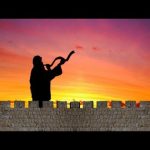

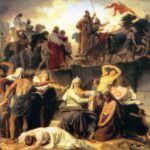
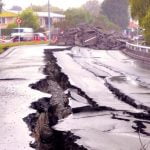
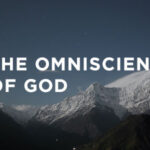
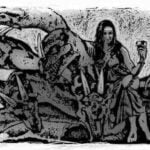
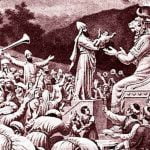
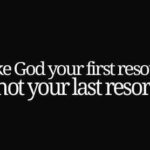

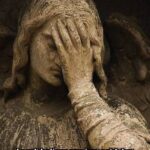


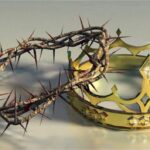

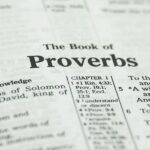



Well said. Yep: 2 different women. Just been reading Jeremiah so it’s all fresh.
I have had a few Catholic friends and I definitely expect to see at least some of them in the kingdom so I don’t usually raise this but if Mary was the Rev. 12 woman and supposedly ever virgin who are the remainder of her seed at the end of the chapter? Unfortunately some Catholics get cranky when you raise this simple question. They shouldn’t.
From what I have read I believe there have been many Catholic theologians who have understood that this woman is more than just Mary but even if they showed they understood the prophesied implications they remained shtum about this presumably so as to not cause division. Of course Protestants are expert at causing division so it doesn’t bother us.
To me prophecies are a little like fractals in that the same shapes appear at different magnification. So prophecies and truths are shown similar at different levels but there is an ultimate, high level where they are accurately true.
It seems clear to me that the crowned woman in Rev. 12 should be seen in the light of the crowned woman in Ezek 16 who is referred to as Jerusalem but really speaks for all Jews. The woman in Ezek 16 is clothed by God, the Rev 12 woman is seen as clothed by the Sun. The Ezek 16 woman is shown as chosen by God from the nations about and the Rev 12 woman has the moon at her feet which I believe is likely the crescent moon which has been a symbol for the nations around Israel since prehistoric times.
The Rev 12 woman is shown fleeing to the wilderness for a time which links prophetically to the “time of the gentiles” and this links in to what God explained in Exek 16.
There is much more, of course, but the gist is the woman is not only Mary giving birth to Jesus, she is also Israel giving birth to the church. We, as the church, are the anointed Christ child which is called the body of Christ and also the temple not made with man’s hands. As Jesus said to the woman at Jacob’s well, “salvation is of the Jews” I.e. the Jews give birth to salvation.
Thanks Bill, interesting how Israelites were worshiping a pagan god ‘Queen of Heaven’ as looks like we have ‘mother nature’, ‘weather gods’ and ‘Drag Queens’ now as satan tries to be fashionable, but same old devil and as God says to Israel in Ezekiel 16:28 “it seems that you can never find enough new gods.”
Revelation 12 chapter was ‘trending’ back in Sept 2017 as some people like myself and a few pastors were saying it was a sign from God in the heavens as the star sign Virgo was giving birth to Jupiter (Jesus) who had been 9 months circling in her womb from Dec 2016. Virgo had stars and planets above her head and moon below her. I remember watching one youtube who showed the star sign Dagon (dragon) below her feet waiting for Jupiter to be birthed but most of these youtubes have been replaced with critical views except for a few like this one https://christinprophecyblog.org/2017/08/investigating-the-great-sign-of-revelation-12/
The author does however concede – ‘the timing of the Great Sign is intriguing. The year 2017 intersects with some very curious anniversaries: 100 years since the Balfour Declaration, 70 years since the UN resolution allowing Israel statehood, and 50 years since Israel recaptured Jerusalem. Plus, the Feast of Trumpets — the Jewish New Year’s celebration of Rosh Hashanah that many believe points to the Rapture — falls on September 21-22, 2017. The range of days preserves Jesus’ proclamation that nobody can know the specific day or hour of His return (Matthew 24:36,44).’